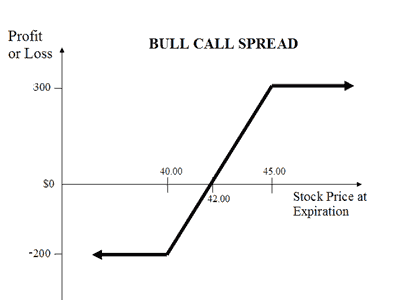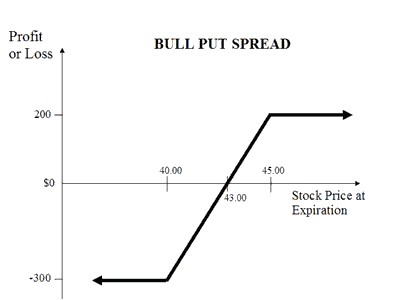 Zerodha (Trading Account)
Zerodha (Trading Account)
FREE Equity Delivery and MF
Flat ₹20/trade Intra-day/F&O
 Zerodha (Trading Account)
Zerodha (Trading Account)
FREE Equity Delivery and MF
Flat ₹20/trade Intra-day/F&O

|
|
Compare Bull Call Spread and Bull Put Spread options trading strategies. Find similarities and differences between Bull Call Spread and Bull Put Spread strategies. Find the best options trading strategy for your trading needs.
| Bull Call Spread | Bull Put Spread | |
|---|---|---|
 |
 |
|
| About Strategy | A Bull Call Spread (or Bull Call Debit Spread) strategy is meant for investors who are moderately bullish of the market and are expecting mild rise in the price of underlying. The strategy involves taking two positions of buying a Call Option and selling of a Call Option. The risk and reward in this strategy is limited. A Bull Call Spread strategy involves Buy ITM Call Option and Sell OTM Call Option.For example, if you are of the view that NIFTY will rise moderately in near future then you can Buy NIFTY Call Option at ITM and Sell Nifty Call Option at OTM. You will earn massively when both of your Options are exercised and incur huge losses when both Options are not exercised. | A Bull Put Spread (or Bull Put Credit Spread) strategy is a Bullish strategy to be used when you're expecting the price of the underlying instrument to mildly rise or be less volatile. The strategy involves buying a Put Option and selling a Put Option at different strike prices. The risk and reward for this strategy is limited. A Bull Put Strategy involves Buy OTM Put Option and Sell ITM Put Option. For example, If you are of the view that the price of Reliance Shares will moderately gain or drop its volatility in near future. If Reliance is currently trading at Rs 600 then you will buy an OTM Put Option at Rs 700 and a sell an ITM Put Option at Rs 550. You will make a profit when, at expiry, Reliance closes at Rs 700 level and incur losse... Read More |
| Market View | Bullish | Bullish |
| Strategy Level | Beginners | Advance |
| Options Type | Call | Put |
| Number of Positions | 2 | 2 |
| Risk Profile | Limited | Limited |
| Reward Profile | Limited | Limited |
| Breakeven Point | Strike price of purchased call + net premium paid | Strike price of short put - net premium paid |
| Bull Call Spread | Bull Put Spread | |
|---|---|---|
| When to use? | A Bull Call Spread strategy works well when you're Bullish of the market but expect the underlying to gain mildly in near future. |
This strategy works well when you're of the view that the price of a particular underlying will rise, move sideways, or marginally fall. |
| Market View | Bullish When you are expecting a moderate rise in the price of the underlying. |
Bullish When you are expecting a moderate rise in the price of the underlying or less volatility. |
| Action |
A Bull Call Spread strategy involves Buy ITM Call Option + Sell OTM Call Option. For example, if you are of the view that Nifty will rise moderately in near future then you can Buy NIFTY Call Option at ITM and Sell NIFTY 50 Call Option at OTM. You will earn massively when both of your Options are exercised and incur huge losses when both Options are not exercised. |
A Bull Put Strategy involves Buy OTM Put Option + Sell ITM Put Option. For example, If you are of the view that the price of Reliance Shares will moderately gain or drop its volatility in near future. If Reliance is currently trading at 600 then you will buy a OTM PUT OPTION at 700 and a sell a ITM PUT OPTION at 550. You will make a profit when at expiry Reliance closes at 700 level and incur losses if the prices fall down below the current price. |
| Breakeven Point | Strike price of purchased call + net premium paid |
Strike price of short put - net premium paid |
| Bull Call Spread | Bull Put Spread | |
|---|---|---|
| Risks | Limited The trade will result in a loss if the price of the underlying decreases at expiration. The maximum loss is limited to net premium paid. Max Loss = Net Premium Paid Max Loss happens when the strike price of Call is less than or equal to price of the underlying. |
Limited Maximum loss occurs when the stock price moves below the lower strike price on expiration date. Max Loss = (Strike Price Put 1 - Strike Price of Put 2) - Net Premium Received Max Loss Occurs When Price of Underlying <= Strike Price of Long Put |
| Rewards | Limited Limited To The Difference Between Two Strike Prices Minus Net Premium Maximum profit happens when the price of the underlying rises above strike price of two Calls. The profit is limited to the difference between two strike prices minus net premium paid. Max Profit = (Strike Price of Call 1 - Strike Price of Call 2) - Net Premium Paid |
Limited Maximum profit happens when the price of the underlying moves above the strike price of Short Put on expiration date. Max Profit = Net Premium Received |
| Maximum Profit Scenario | Both options exercised |
Both options unexercised |
| Maximum Loss Scenario | Both options unexercised |
Both options exercised |
| Bull Call Spread | Bull Put Spread | |
|---|---|---|
| Advantages | Instead of straightaway buying a Call Option, this strategy allows you to reduce cost and risk of your investments. |
Allows you to benefit from time decay in profit situations. Helps you profit from 3 scenarios: rise, sideway movements and marginal fall of the underlying. |
| Disadvantage | Profit potential is limited. |
Limited profit. Time decay may go against you in loss situations. |
| Simillar Strategies | Collar, Bull Put Spread | Bull Call Spread, Bear Put Spread, Collar |


FREE Intraday Trading (Eq, F&O)
Flat ₹20 Per Trade in F&O
|
|
I understand the Advantage of time decay.
On dis-advantage, how time decay may go against in loss situations ?